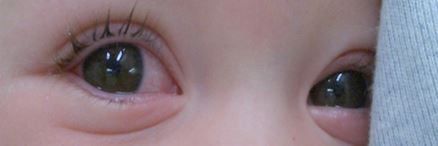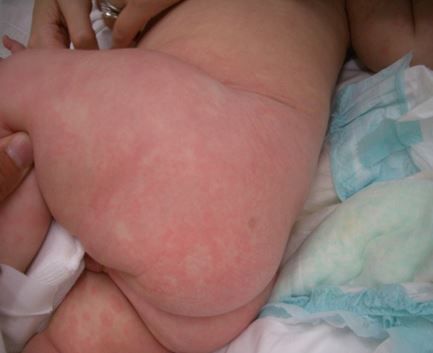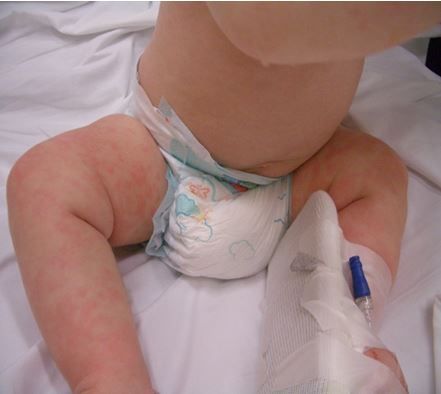- CDC
- Heart Failure
- Cardiovascular Clinical Consult
- Adult Immunization
- Hepatic Disease
- Rare Disorders
- Pediatric Immunization
- Implementing The Topcon Ocular Telehealth Platform
- Weight Management
- Monkeypox
- Guidelines
- Men's Health
- Psychiatry
- Allergy
- Nutrition
- Women's Health
- Cardiology
- Substance Use
- Pediatrics
- Kidney Disease
- Genetics
- Complimentary & Alternative Medicine
- Dermatology
- Endocrinology
- Oral Medicine
- Otorhinolaryngologic Diseases
- Pain
- Gastrointestinal Disorders
- Geriatrics
- Infection
- Musculoskeletal Disorders
- Obesity
- Rheumatology
- Technology
- Cancer
- Nephrology
- Anemia
- Neurology
- Pulmonology
Kawasaki Disease
Kawasaki disease is an uncommon febrile vasculitis of unknown etiology. It typically affects young children and can lead to significant morbidity and mortality if not diagnosed and treated.
Figure 1.

Figure 2.

Figure 3.

The parents of a fully vaccinated 7-month-old boy bring the child to the pediatrician’s office because he has had a fever and a rash for the past 4 days. They had been to an urgent care center the day before and were told that the fever and conjunctivitis that was noted were probably from a virus called adenovirus. Zinc oxide diaper cream was recommended for the diaper rash. Today the parents say he is more irritable and the rash looks worse despite frequent diaper changes and regular use of the zinc oxide diaper cream. The child also has a slight runny nose, but no vomiting, diarrhea, cough, trouble breathing, or other symptoms. He has been around other children his age, but as far as the parents know, none of them were ill.
During physical examination the child is calm in his mother’s lap. Vital signs are normal except for a temperature of 38.2°C (101.2°F). His eyes appear injected without discharge and his oropharynx is clear. The neck is supple and demonstrates no significant lymphadenopathy. Lungs and heart sound normal and the abdomen is nontender. The rest of the physical examination is essentially normal except for the findings shown in Figures 1-3 at right (click images to enlarge).
What is the most likely diagnosis? What should you do next?
Answer: Kawasaki disease; admit for intravenous immune globulin (IVIG)
Discussion
Kawasaki disease (KD), also known as mucocutaneous lymph-node syndrome, is an uncommon febrile vasculitis of unknown etiology that typically affects young children and can lead to significant morbidity and mortality if not diagnosed and properly treated. The diagnostic criteria are mostly clinical and include a temperature of greater than 39.4°C (103°F) for 5 days plus 4 out of 5 of the following: bilateral conjunctivitis, oral involvement, red or pealing palms or soles, rash on the torso and cervical lymphadenopathy (see Table below for more details). Lymphadenopathy occurs in only about 15% of cases in children in the United States but is more common in Asia and also in adults. Because delay in treatment increases risk of complications, so-called incomplete KD, which includes the fever and at least 2 of the additional signs plus 3 of the following laboratory criteria should trigger treatment: ESR >40, CRP >3, albumin <3, ALT, WBC >15, anemia, platelets >450K, pyuria, and ECG or echo abnormalities.
The differential diagnosis of KD includes infectious illnesses with rash such as measles, scarlet fever, and a variety of other viral infections. Other considerations include drug reactions and rheumatologic conditions. The most feared complication of KD is the formation of coronary artery aneurysms, which can lead to thrombosis and myocardial infarction. The risk is about 25% in untreated patients and 5% in treated patients, but may be lower when age of onset is later (older than 5 years). Other complications include hepatitis, cholecystitis, pancreatitis, orchitis, and meningitis.
Treatment of KD involves admission to the hospital for IVIG and aspirin, ideally started within 7 days of onset. (See Table below for dosages.)
This patient was admitted and therapy with IVIG was started. The echocardiogram fortunately showed no evidence of coronary aneurysm formation. The fever resolved over the next 2 days, and he was sent home with his parents on the third day to complete 8 weeks of aspirin therapy.
